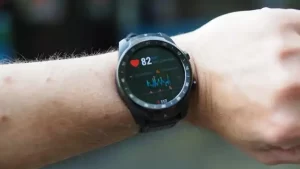Why are children not the priority vaccinations for COVID-19 vaccine?
Why are children not the priority vaccinations for COVID-19 vaccine?
Why are children not the priority vaccinations for COVID-19 vaccine? Recently, China has successively launched the COVID-19 vaccine vaccination work. According to the priority level, it can be divided into key guarantee objects, key recommended objects and general objects, but children are not among these three groups.
Part of the vaccination regulations of the COVID-19 vaccine clearly mention that the vaccination targets are susceptible people between 18 and 59 years old.

Why are children not the target of the current COVID-19 vaccine?
Children should be priority vaccination targets
First of all, it is not that the children population does not need the COVID-19 vaccine.
From the perspective of the development of the global epidemic, the proportion of children’s cases is increasing significantly, from 2% in the early stage of the epidemic to 7%. Although the incidence rate is still lower than that of adults, or the severity of the disease is significantly lower than that of adults, children may have an important role in spreading the virus.
Studies have shown that the nasopharynx of pediatric patients has the new coronavirus load equal to or greater than that of adult patients. Children also need regular gathering activities such as school, and the infection is easy to spread. From this point of view, it should be the priority immunization target.
Safety is the biggest consideration
Before a vaccine is registered for marketing, it has to go through multiple links such as project research, safety assessment, phase I, II, and III clinical trials. It usually takes several years to decades from research and development to marketing.
Under the threat of a special epidemic, countries have accelerated the development of COVID-19 vaccines, and the COVID-19 vaccine is expected to be on the market in one year.
In order to get to market faster, only adults were selected as the subjects of phase 3 clinical trials in the early stage. The COVID-19 is a global public health emergency, and vaccine development and use are urgently authorized by the drug regulatory authorities of various countries.
Even ordinary vaccines are first verified for safety in adults. For example, measles vaccine, polio vaccine and tetanus vaccine are gradually expanding the age range to carry out clinical trials.
According to the search, there are currently only a few coronavirus vaccine trials involving children, one of which is the Oxford-AstraZeneca trial.
According to data from ClinicalTrials.gov, the Chinese company Sinovac Biotech included children between the ages of 3 and 17 in the trial that started on September 28, 2020, but in general, most vaccine manufacturers did not target 18 Participants under the age of 10 have undergone similar experiments.
The complexity of childhood vaccine development
1. Vaccine development requires scientific and rigorous testing to ensure safe use.
Because of safety issues, some common viruses that have been circulating for many years that are more threatening to children have not yet been given a vaccine.
For example, bronchiolitis caused by respiratory syncytial virus (RSV) causes 30 million lower respiratory infections and 3 million hospitalizations every year. However, during the development of the RSV vaccine, there have been situations that aggravated the disease and even caused the death of children. Scientists have continued to develop it for decades.
2. From the perspective of the mechanism of viral infection, the immune response caused by the COVID-19 vaccine is complicated.
The immune response of children and adults is different. From a few months old to a teenager, the immune response is definitely different. This difference has resulted in different doses and times of vaccination.
For example, the dose of hepatitis B vaccine in children is much less than that in adults.
In addition, the frequency of vaccination may also be different. For example, children aged 9 years and over and adults only need one dose. Children aged 6 to 8 years who have received flu vaccine for the first time or less than two doses should receive two doses.
3. Children’s Multiple System Inflammatory Syndrome (MIS-C) is a recent complication of childhood COVID-19 pneumonia observed in Europe and the United States.
Around April of this year, pediatricians in Italy and the United Kingdom observed a surge in children with similar manifestations of Kawasaki disease. Etiological examination found that many MIS-C patients have evidence of new coronavirus infection.
In particular, the positive serological test suggests that this may be an inflammatory storm caused by the immune response triggered by the virus. Therefore, some scholars worry that the immune response caused by the vaccine will trigger the same complications.
Children must be protected
In general, given the current rate of research and development, the COVID-19 vaccine research and development still looks very optimistic.
We hope that major companies can launch phase 3 clinical trials for children as soon as possible, and strive to be put into use next year to ensure that children can also be vaccinated to protect their health and normal lives.
If children cannot grow, live and learn normally, just as UNICEF and the World Health Organization worry:
Because the COVID-19 epidemic has affected the normal development of vaccination work in most countries, this may cause the incidence of vaccine-preventable infectious diseases to rise, and the health consequences caused may even far exceed the harm caused by the COVID-19 epidemic itself.



